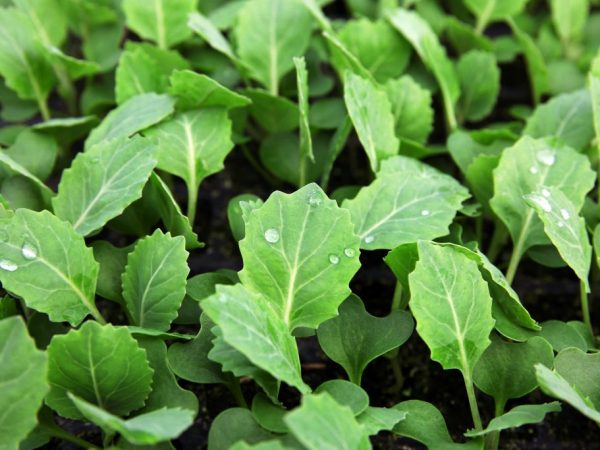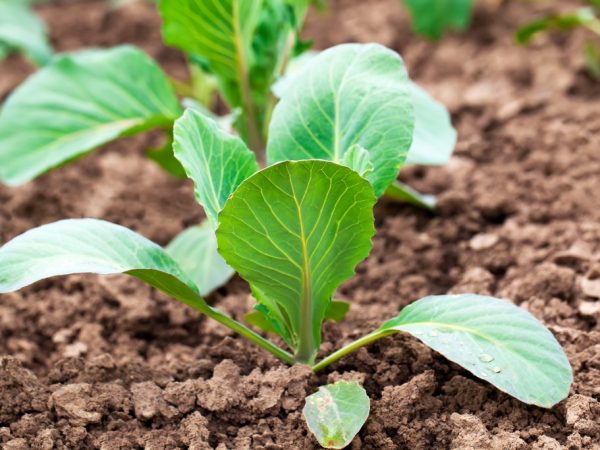How to pick cabbage seedlings
Pickling cabbage is an important step in the care that allows you to improve quality indicators. Thanks to the dive, the seedlings gain strength. When growing seedlings, be sure to study all the rules for picking cabbage.

Pickling cabbage seedlings
Pick rules
Growing seedlings of vegetables at home requires attention from gardeners and adherence to care technology. Pickling cabbage seedlings is the process of transplanting it from the mother container into separate pots: peat or plastic cups filled with earth. Also, the plants are rolled into "diapers". Julia Minyaeva advises to do this in video tutorials.
Picking helps gardeners to select healthy plants and thin out seedlings thickened during the initial sowing. The process is also aimed at helping the plants themselves, because they:
- form a healthy and more massive root system;
- get more light;
- take in more nutrients from the new soil.
Also, diving cabbage allows you to slow down the growth of seedlings when the seeds are slightly buried and emerged ahead of schedule. If the actions are carried out in compliance with the requirements of agricultural technology, the restoration process will take place as soon as possible.
Time to dive
Diving cauliflower should be done when the seedlings reach the age of 8-10 days. During this period, each seedling of cauliflower and white cabbage already has 2 true leaves. Broccoli and kohlrabi, as well as plants of the Brussels and Peking varieties, dive 12-13 days after the entrance, when 3 true leaves grow on the seedlings.
Only correct and timely transplantation brings benefits, because plants are injured during this event. They also pay attention to the lunar calendar and prefer to dive vegetables in the first and second quarters, avoiding work on days under the sign of Aquarius.
Soil and seedling preparation
Cabbage seedlings should be dived after pre-sowing. The best remedy for this is potassium permanganate solution.
The soil for plant transplantation is prepared in 14 days. The best soil composition is black soil mixed with sawdust. The indicators of the soil mixture are improved with the help of:
- 10 g of ammonium nitrate;
- 12 g superphosphate;
- 25 g of lime;
- 5 g of potassium nitrate.
The substances are dissolved in 10 liters of water, and then watered with sawdust: 180 ml per plant.
Seedlings must be watered before diving. This prevents the soil from crumbling, so the roots will not be exposed. The cultivation of dived plants has some peculiarities. They relate to the care of transplanted plants. The sprouts can get sick after the procedure - improper care during this period destroys all the bushes.
Follow-up care

Plants need good care
After transplanting, seedlings need time to recover, because picking cabbage seedlings is a very painful process, and at the time of transfer to fresh soil, the roots are exposed.If the operation is performed incorrectly, the plants die. You can avoid this and shorten the time of illness after transplanting with the help of feeding and proper care of the plants.
To dive cabbage, a number of rules are followed:
- Pots with dived seedlings need protection from direct sunlight and wind. It is especially important to provide rest for the first 2-3 days, while the plants are at their weakest.
- It is advisable to keep the containers in a room with an air temperature of at least 16 ° C. This temperature regime for sprouts is observed until growth is restored.
- After transplanting, seedlings need daily watering. It is better if it is drip.
Dived plants are hardened only after they release 2 young leaves. To speed up the healing process, the seedlings are treated with any growth stimulant.
Foliar dressing is carried out no earlier than 72 hours after transshipment. Root feeding is done after 10 days. For these purposes, use humate diluted in water (5 g of powder per 5 l of liquid).
Step-by-step method of work
The transplanted plants are resistant to diseases, they give a greater yield.
Step-by-step picking process:
- Prepare pots or "diapers" from cellophane. The containers are filled by about a third. A prerequisite is the presence of a drainage hole in each glass for draining water.
- Pry the seedling with a teaspoon and gently lift it up, trying to keep a clod of earth.
- If the root is long, pinch it. The plant forms lateral roots, while the central one atrophies. Pinched plants need more watering.
- The seedling is buried to the first (cotyledonous) leaves, and then sprinkled with dry earth.
- The earth around the stem is lightly tamped with your fingers, then the plant is watered with warm water without fertilization.
- After transplanting the seedlings into pots or cellophane containers, sprinkle the earth and lightly tamp it.
Conclusion
Growing such a vegetable at home requires complex care, including a transplant. Thanks to this, the plant grows strong, disease resistant and gives a high yield. Diving cauliflower seedlings, like all other varieties, you need to follow the rules.

